测序原理 - PacBio技术资料
手头有一套完整的PacBio技术资料,会慢慢的总结到博客上。
写在前面:PacBio公司主要有两个测序平台一个是RS,一个是最新的Sequel,下面如果没有指明则是在讲RS平台。
SMRT测序技术总览(SMRT® Sequencing Technology Overview)
首先必须对下面几个东西形成概念:
1.SMRT Cell:纳米制造的,不可回收的消耗品,每个 cell 里有 1M 的well(即ZMW),ZMW是单分子实时测序的最小场所。
Sequel SMRT Cell 1M are nano-fabricated纳米制造 consumables消耗品 patterned with附有图案 1,000,000 wells called zero-mode waveguides零模波导孔 (ZMWs). The structure of the ZMW is unique, as it enables real-time sequencing observation. They are packaged together in a streamlined流线型 4 SMRT Cell format (4/tray托盘). One SMRT Cell is utilized in each sequencing reaction, and experiments can be run on a single SMRT Cell or in batch批 mode, giving your projects a greater level of flexibility.
2.SMRT得到的初始信号是什么?(Signal Processing and Base Calling)
最初得到的是光学信号,需要将光学峰转化为碱基(Converting pulses of light into DNA bases and kinetic measures)
3.SMRTbell:样品准备时,会用到SMRTbell的Adapters
4.测序:在Adapters处加上DNA聚合酶和引物,复制就开始了
5.不同建库下的不同结果(Two Ways to Utilize PacBio® Long Readlengths)
一种是插入片段很长(>2kb,通常是为了denovo组装),这时由于读长限制只能测一个pass(两个Adapters之间就是一个pass)
一种是插入片段很短(<2kb,通常为转录组),这时就会测出多个pass,因而产生CCS,可以进行校正(错误率可降至1%以下)。
6.测序后reads的长度分布和校正准确度(Exponential Read Length Distribution and Consensus Accuracy)
7.C2 Chemistry的结果(Typical Results with C2 Chemistry)
8.实时动态信息(Kinetic Information)
SMRT技术可以实时的测出DNA链上的各种碱基类型(修饰和未修饰)(Epigenetics, DNA damage, new, novel modifications)
9.总结
SMRT单分子实时测序,会测出很长的reads,有多种方式来利用reads的长度(CLR和CCS)
没有扩增偏向,二代技术在GC含量异常区域会明显的测不准,而PacBio技术则没有任何偏向
能读出DNA链上的所有信息(表观),只要你能识别分离出信号的意义
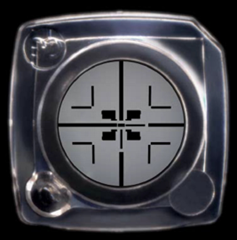
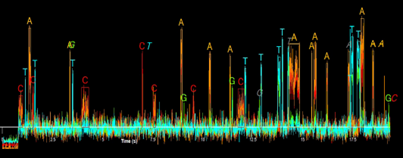
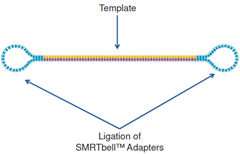



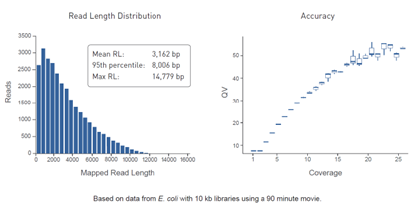

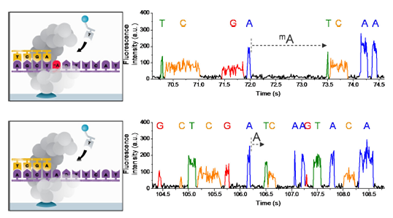


【推荐】国内首个AI IDE,深度理解中文开发场景,立即下载体验Trae
【推荐】编程新体验,更懂你的AI,立即体验豆包MarsCode编程助手
【推荐】抖音旗下AI助手豆包,你的智能百科全书,全免费不限次数
【推荐】轻量又高性能的 SSH 工具 IShell:AI 加持,快人一步
· 从 HTTP 原因短语缺失研究 HTTP/2 和 HTTP/3 的设计差异
· AI与.NET技术实操系列:向量存储与相似性搜索在 .NET 中的实现
· 基于Microsoft.Extensions.AI核心库实现RAG应用
· Linux系列:如何用heaptrack跟踪.NET程序的非托管内存泄露
· 开发者必知的日志记录最佳实践
· winform 绘制太阳,地球,月球 运作规律
· AI与.NET技术实操系列(五):向量存储与相似性搜索在 .NET 中的实现
· 超详细:普通电脑也行Windows部署deepseek R1训练数据并当服务器共享给他人
· 【硬核科普】Trae如何「偷看」你的代码?零基础破解AI编程运行原理
· 上周热点回顾(3.3-3.9)